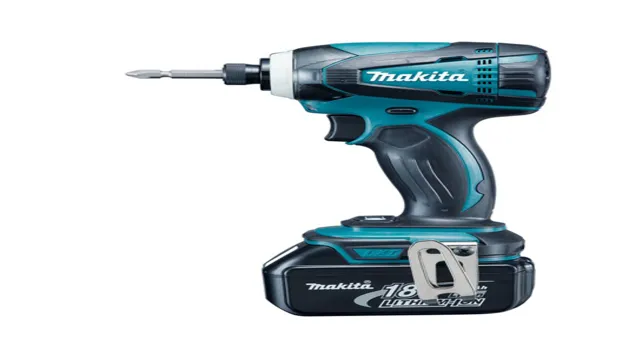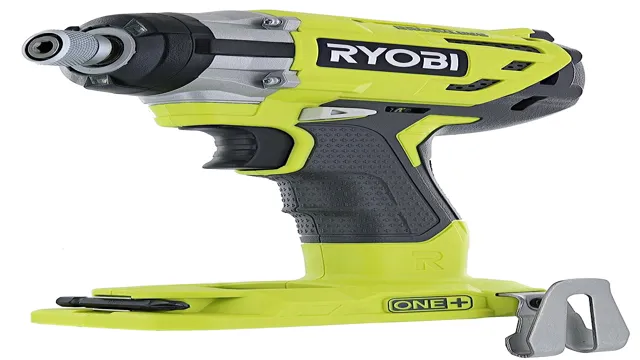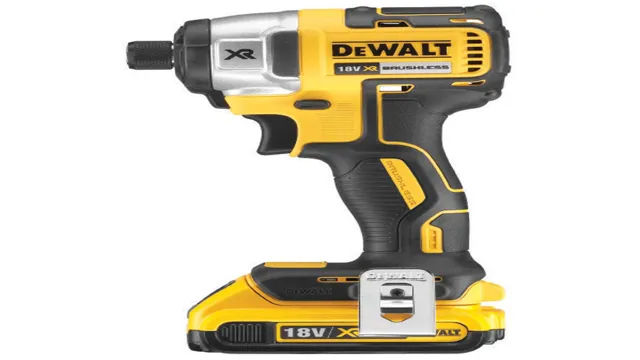Why Use an Impact Driver Over a Drill: 5 Benefits You Need to Know
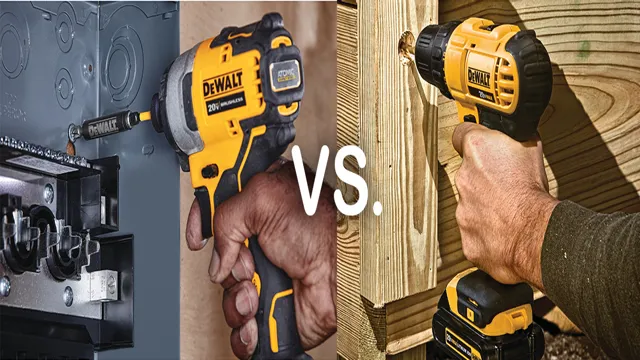
Are you in the market for a power tool but not sure whether to get an Impact Driver or a Drill? It’s a common question among DIY enthusiasts and professionals alike. Both tools are useful for driving screws and drilling holes, but they have distinct differences that affect their performance. In this blog post, we’ll explore the differences between Impact Drivers and Drills, and which one is better suited for your needs.
By the end of this post, you’ll have a better understanding of these two power tools and be able to make an informed decision on which one to use for your next project.
What is an Impact Driver?
If you’re wondering why use an impact driver over a drill, you’re not alone. An impact driver is a power tool that delivers bursts of rotational force to quickly and efficiently drive screws and bolts into wood or metal. The difference between an impact driver and a drill is the way the force is delivered.
A drill bores into material with a steady rotation, while an impact driver combines a rotational force with a hammering action to drive screws without slowing down or stripping the screw heads. This makes an impact driver an excellent choice for tough jobs that require a lot of torque, such as building a deck or installing drywall. In comparison, a drill would require more effort, slowing you down and potentially causing damage to the material you’re working with.
Overall, an impact driver is a versatile and efficient power tool that can save you time, effort, and frustration on your next project.
Maximum Torque Output
An impact driver is a power tool that provides maximum torque output for driving screws, bolts, and nuts into different surfaces. Unlike a regular drill, an impact driver uses a unique combination of rotational force and quick, concussive blows to deliver exceptional power and speed. It’s like having a mini jackhammer in your hand, making it ideal for heavy-duty tasks that require maximum torque.
With its high torque output, an impact driver can easily handle tough materials, making it an essential tool for many DIY enthusiasts and professionals alike. Whether you want to drive long screws into hard wood or install a new set of bolts, an impact driver is a fantastic tool to get the job done quickly and efficiently. So, if you’re looking for a powerful tool that will make your next project a breeze, consider investing in an impact driver today!
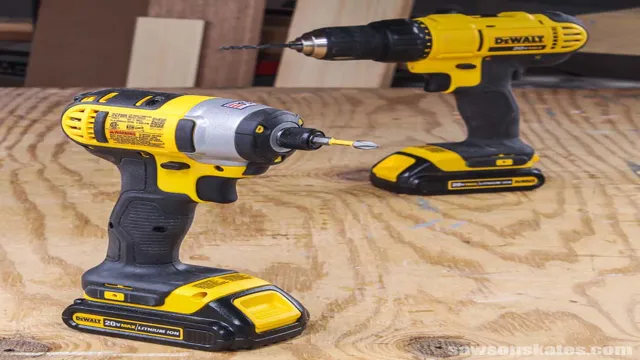
No Kickback
An impact driver is a power tool that is specifically designed for driving screws, bolts, and other fasteners into difficult materials like hardwood, metal, and concrete. It works by delivering sudden bursts of rotational force which is essential for driving screws and other fasteners with minimal effort. Unlike drilling, which creates a lot of torque, an impact driver generates immense rotational force that helps to push the fasteners deeper into the material without any kickback.
It also means that the user will not experience any fatigue or wrist strain as the tool does all the work for you. Impact drivers have quickly become a popular choice for professional contractors and DIY enthusiasts as they are versatile, efficient, and easy to use. Whether you’re hanging shelves, installing cabinets, or building a deck, an impact driver is a valuable tool that can help you get the job done quickly and easily, saving you time and energy in the process.
Easy Control
An impact driver is a power tool that is used to drive screws and bolts with ease. It is an incredibly useful tool that offers easy control and precision when working with woodwork and metalwork. Unlike a regular drill, an impact driver applies an intense amount of force and efficiency to the task at hand, making it the perfect tool for professionals and DIY enthusiasts.
The impact driver’s mechanism works by delivering rotational power to the screw or bolt’s driver head from an internal hammer and anvil action. This action creates powerful and consistent torque that makes it super easy to drive heavy-duty screws into thick materials such as hardwood and metal sheets. The impact driver’s design and easy control make it the go-to tool for any job that requires precision and speed.
What is a Drill?
Sometimes when trying to decide between using an impact driver over a drill, it’s essential to understand what each tool is designed to do. A drill is a tool that rotates a drill bit typically used for drilling holes into wood, plastic, and metal surfaces. A typical drill’s motor rotates the chuck and bit at a consistent speed regardless of resistance.
On the other hand, an impact driver is specifically designed for driving screws, bolts, and other fasteners into tough materials such as hardwood and concrete. Unlike drills, impact drivers have a mechanism that generates an additional force in addition to the rotating motion. This mechanism strikes the screwdriver bit several times per second in a rotational motion, driving the fastener into the material.
The impact driver’s high torque and additional force make it ideal for challenging jobs where other tools might struggle.
Versatility
Drills are versatile power tools that are designed to bore holes into wood, metal, and various other materials. Simply put, a drill is a motorized device that rotates a drill bit, which in turn cuts through the material being drilled. The most commonly used type of drill is the handheld power drill, which is available in corded and cordless models.
Corded drills provide constant power, while cordless drills use rechargeable batteries, making them more portable and convenient to use. Other types of drills include hammer drills, rotary hammers, and right-angle drills, each of which is designed for specific applications. Whether you are a DIY enthusiast or a professional contractor, a drill is an indispensable tool that can help you accomplish a wide range of tasks, from drilling holes for screws and bolts, to mixing paint and mixing cement.
With the right drill and accessories, the possibilities are endless.
Maximum Speed
A drill is a popular power tool used for drilling holes and fastening screws in different materials. It operates by rotating a driver or drill bit rapidly to create holes or insert and remove screws. Some drills operate by electricity, while others function with battery power or compressed air.
The maximum speed of a drill depends on the type and model you choose, but most drills can spin at an impressive rate of 2,000 rotations per minute (RPM) or more. However, it’s crucial to use the right bit size and material for your project to avoid damaging the drill and creating suboptimal results. For example, a drill designed for wood isn’t suitable for drilling through metal or concrete, and vice versa.
Therefore, familiarizing yourself with the different types of drills available on the market and their corresponding maximum speeds is essential. It will help you select the right tool for your project and achieve the desired outcomes efficiently.
High Precision
When it comes to precision drilling, using the right tool for the job is essential. Enter the drill – a handheld power tool that utilizes rotational force to create holes in a variety of materials. But not all drills are created equal.
Depending on the project at hand, different types of drills may be needed, each with their own specific features and advantages. For instance, a cordless drill may be ideal for a DIY home project, while a hammer drill may be better suited for drilling into masonry or concrete. Additionally, varying drill bit types can be used to achieve different hole sizes and shapes.
Ultimately, whether you’re a professional builder or just a weekend DIY enthusiast, understanding the intricacies of different drills and their capabilities is paramount to achieving precise, high-quality results.
When to Use an Impact Driver?
When it comes to drilling and driving, there’s always been the question of when to use an impact driver over a drill. While both tools serve their own specific purposes, an impact driver may prove to be the better option for certain projects. An impact driver’s high torque output makes it ideal for tasks that require driving longer screws or bolts, like building furniture or decks.
Its quick, powerful bursts also make it more viable for working with dense, thick materials. Impact drivers are also designed with a hex chuck which can hold hexagonal bits, providing a secure grip that can withstand the wobbling and slipping that regular chucks experience. Overall, while a drill may be sufficient for most home DIY projects, an impact driver is a must-have tool for any professional contractor or serious DIY enthusiast.
So, why use an impact driver over a drill? For jobs requiring heavy-duty fastening, speed, and precision, an impact driver is clearly the better choice. Its unique characteristics make it better suited for driving screws, nuts, and bolts without straining the user’s hand, which is typical when using a drill. Additionally, the torque of an impact driver is controlled by electronic sensors, so it can operate with more precision, creating clean, flush finishes ideal for woodworking and other precision tasks.
Ultimately, an impact driver makes driving screws and fasteners much easier, faster, and more accurate, providing a professional-level finish for any job.
Driving & Loosening Screws
Impact Driver When it comes to driving or loosening screws, there’s no doubt that impact drivers are the tool of choice for many professionals. But when should you use an impact driver instead of a regular drill or screwdriver? The answer lies in the type of screws you’re dealing with. Impact drivers are best suited for heavy-duty screws that require a lot of torque to be driven in or removed.
They’re particularly useful for tasks like construction, automotive repair, and DIY projects that involve large screws or bolts. In contrast, regular drills and screwdrivers are better for lighter jobs that require less force. For example, if you’re hanging up a picture frame or tightening a loose screw on a piece of furniture, a regular drill or screwdriver will do the job just fine.
If you try to use an impact driver for these types of tasks, you risk damaging the material or overtightening the screw, which can lead to problems in the future. In summary, if you’re working with heavy-duty screws or bolts, an impact driver is your best bet. But for lighter jobs that require less force, stick with a regular drill or screwdriver.
Remember, using the right tool for the job will not only make your work easier but also ensure that it’s done right and safely.
Tightening Nuts and Bolts
Impact Driver Are you wondering whether to use an impact driver for your DIY project? Impact drivers are designed to provide high torque for tightening nuts and bolts quickly and efficiently. They are particularly useful for tasks that require a lot of force, such as building a deck or assembling furniture. Impact drivers are also great for working with long screws, where a regular drill may not be powerful enough to drive it all the way in.
However, it’s important to note that impact drivers are not always the right tool for the job. For example, they may not be suitable for delicate or precision work, as they can be too powerful and cause damage. As with any tool, the key is to choose the right tool for the task at hand.
So, if you’re working on a project that requires a lot of torque and force, an impact driver might just be the tool you need.
When to Use a Drill?
If you’re wondering why use an impact driver over a drill, the answer is simple. Impact drivers are designed to deliver high torque output with minimal effort, making them ideal for driving screws, nuts, and bolts of all shapes and sizes. On the other hand, drills are better suited for drilling large and small holes in various materials like wood, metal, and concrete.
Impact drivers have an internal hammer mechanism that delivers rotational force. When the hammer hits the anvil concurrently, it generates an intense burst of energy, allowing it to drive in screws much faster than a drill. Additionally, impact drivers can handle tough jobs such as driving long, fat screws or removing corroded bolts much easier than a drill.
However, drills are more versatile and offer more control when it comes to precise drilling, making them the go-to tool for woodworking and other delicate tasks. So if you’re looking for a tool that can make your DIY projects easier and faster, consider investing in an impact driver.
Conclusion
In conclusion, using an impact driver over a drill is like using a superhero over an average Joe. Impact drivers have the power and speed to handle tough tasks, making them the ultimate tool for construction, woodworking, and DIY projects. They provide maximum torque and precision, ensuring the job is done efficiently and effectively.
So if you want to save time, effort, and impress your friends with your handy skills, ditch the drill and unleash the power of the impact driver.”
FAQs
What is an impact driver and how is it different from a drill?
An impact driver is a power tool that delivers high torque output with minimal reactionary torque, while a drill typically has a lower torque output and higher reactionary torque.
Can I use an impact driver for drilling holes?
Yes, an impact driver can be used for drilling holes with the appropriate drill bit, but it may not provide the same level of precision as a dedicated drill.
What are the benefits of using an impact driver over a drill?
An impact driver is ideal for driving screws, nuts, and bolts quickly and efficiently due to its high torque output and minimal reactionary torque. Additionally, it can be easier to use in tight spaces and can prevent wrist strain.
When should I use a drill instead of an impact driver?
A drill is better suited for tasks that require precision and control, such as drilling small holes or working with delicate materials.
Do I need special bits for an impact driver?
Yes, impact-rated bits are designed to handle the high torque output of an impact driver without breaking. Using regular drill bits can lead to damage of the tool and potentially pose a safety hazard.
Is an impact driver more expensive than a drill?
It depends on the model and brand, but in general, impact drivers tend to be slightly more expensive than drills due to their specialized functions.
Can an impact driver be used for automotive repairs?
Yes, an impact driver can be a useful tool for automotive repairs, such as changing tires or removing stubborn bolts. However, it is important to use the appropriate sockets and attachments for the task at hand.
